Teaching English abroad is an immensely rewarding experience, this we know well. But let’s face it, it’s hard work too and at the end of the day you didn’t travel halfway across the world just to stay put and work, you teach abroad so that you can travel and experience new cultures and create awesome memories too. Vietnam is an outstanding country to vacation in and whether you are teaching English in Vietnam or across the way in Thailand, South Korea or China, it really is super accessible. And, with a wealth of ancient and more modern history, an up and coming and vibey cafe culture, fascinating local tribes and scenery that regularly tops world’s best lists – it’s hard to find a reason NOT to go!
Oh and before you point it out, I’ve purposefully left off the two biggest cities from this list – we’ll be focussing on Hanoi and Ho Chi Minh City in another post!
1. It’s easy to travel in
Vietnam is sort of like the Chile of Asia, except there are no fjords, big volcanoes, no deserts and decidedly few Spanish-speakers. Okay, so what I’m trying to get at is that like it’s South American counterpart, it is seriously long and narrow, at it’s narrowest it’s just 40km (less than 25 miles) across, yet a journey from the southern tip to Lao Cai on the border with China is 2200km (just short of 1400 miles).
Why is this a good thing? Well it means you can do Vietnam in more-or-less a straight line so you won’t have to worry about missing many things off down side roads or in parts of the country that are just too far off your main route.
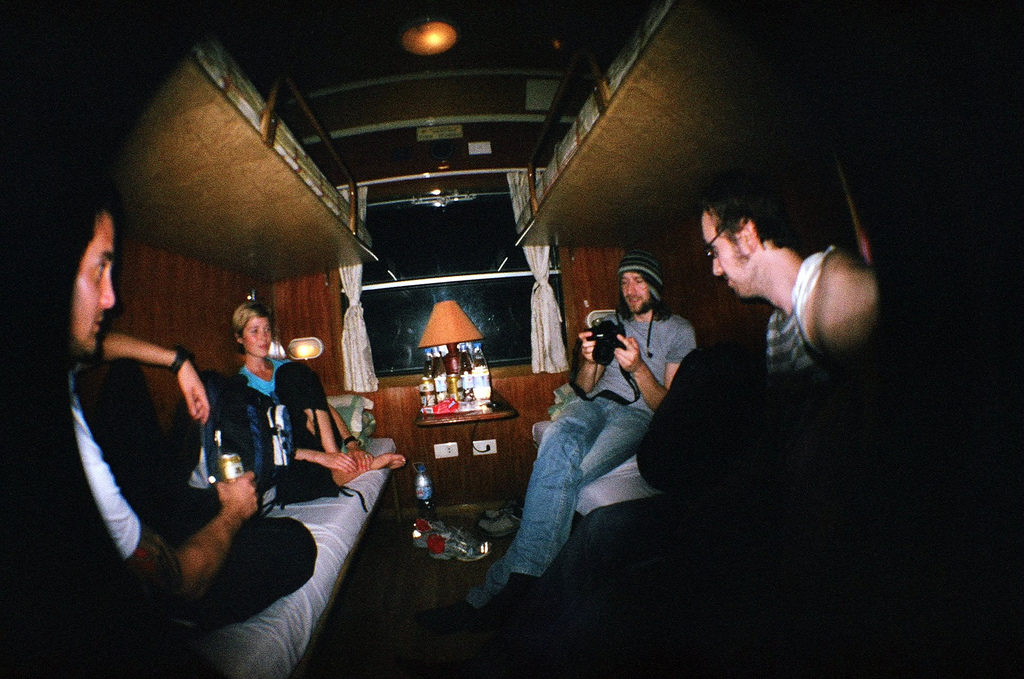
Inside a soft-sleeper 4 berth cabin on a train in Vietnam. Image Credit.
Travelling around Vietnam is also effortless and relatively comfortable. Vietnam has a very popular and refreshingly sophisticated rail network with hundreds of trains running up and down the length of the country, shuttling locals and visitors alike to cities and towns all along the way.
Many of the trains offer comfy air-conditioned sleeper coaches so that you can set out from the bustling capital of Hanoi just after dinner and be in historic Hue before lunch the next day.
Almost all the trains have aircon, particularly on the main routes and seating options are plentiful, so just be aware of what they are when booking. Hard seats are wooden seats, often in air-conditioned carriages they’re a bit uncomfortable but are fine for shorter journeys. Soft seats are like a more comfortable version of a reclining airline seat and are good for long daytime journeys. Hard sleeper carriages contain compartments with 6 berths (beds) and don’t let the ‘hard’ put you off, it’s no wooden bench and is perfectly comfortable.
Then finally there’s the soft sleeper carriages which contain 4 berths per carriage and are a bit more comfy. Most sleeper carriages and many of the soft seater carriages contain power sockets, water dispensers and meal services – a meal usually costs just about $2.
Interested in Teaching English in Vietnam? We’ll send you more info!
Or learn more about our Teach English in Vietnam program
2. The food is out of this world
If you’re like me, food is a massive part of your life and Vietnam’s cuisine, like that of many of its neighbours, is recognised as some of the best in the world and by top chefs nonetheless! The great thing is that meals here cost very little especially if you’re making like the locals and buying from street vendors.
Probably one of the most famous will be banh mi, a delicious hybrid of Vietnamese and French cuisine, thanks to the years of French colonialism the country endured. It’s essentially a baguette packed to overflowing with layers of pickles, fresh herbs, chillies, pork, pork and more pork – there are tons of varieties so if you’re not a meat eater don’t be scared to ask for yours without the oink.
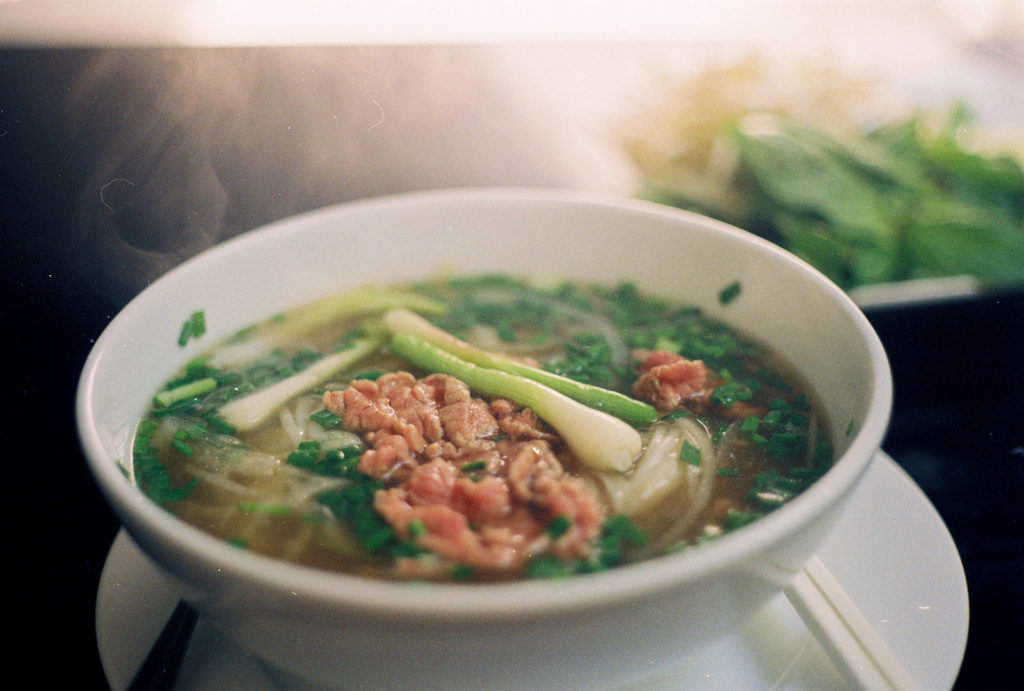
A bowl of delicious Vietnamese Pho. Image Credit.
And I couldn’t mention Vietnamese food without talking about Pho, oh pho, you delicious, dreamy, soupy, meaty, spicy flavoursome food of the gods. Usually served with beef or chicken this soup-noodle dish is packed with fresh crunchy veggies, aromatic herbs and soft rice noodles all steeped in a rich, yet light clear broth. It is Vietnam in a bowl and you won’t be able to avoid it.
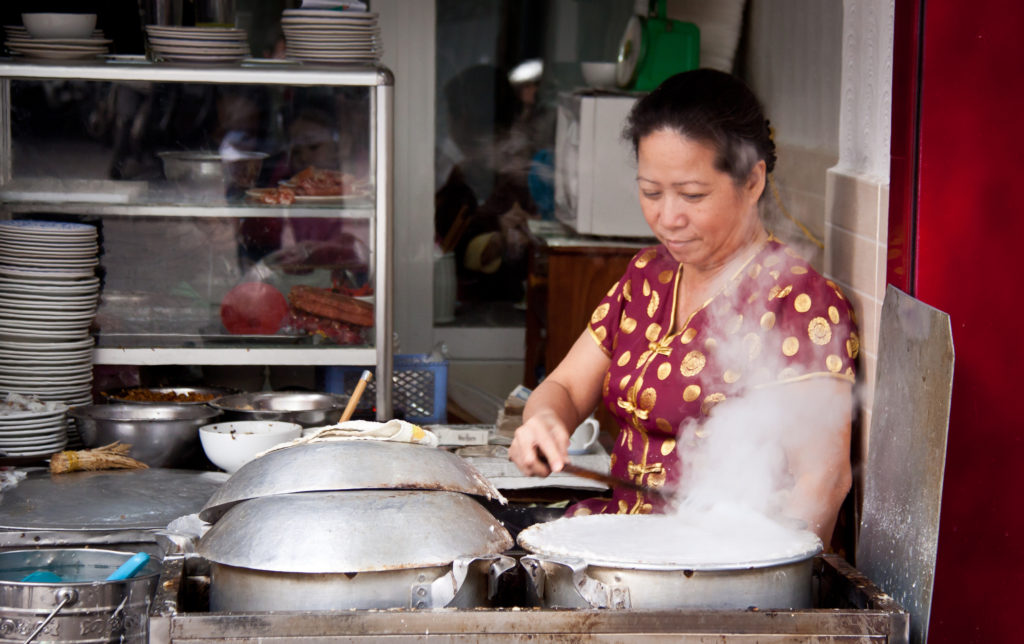
A woman prepares the pancake/noodle part of a dish of banh cuon at a street vendor in Hanoi. Image Credit.
Okay there are literally hundreds of of other dishes I could list but let’s pick something a little different for my final one, banh cuon. It’s somewhere halfway between a spring roll and rice noodles in that it’s in the shape of a spring roll with the crepe part resembling a cooked noodle in consistency.
It’s stuffed full of tasty goodness (usually ground meat and veg) and topped with bean sprouts, a mountain of fresh herbs and uber-yummy crispy fried shallots! Get some.
3. The beaches are pretty awesome
Yes, Vietnam is a beach destination too – though it’s rarely touted as one – which stands to reason having over 3000km of coastline (over 2000 miles). It also has tons of islands mostly clustered in the far south-west and the far north-east but there are also plenty along the length of the coast.
Phu Quoc is probably the most famous (and largest) lying just off of Cambodia’s coast, it has plenty of beaches itself but it’s surrounded by many more stunning small beaches on far-flung islands which you can reach on day trips for snorkelling or just laying in the sun on secluded stretch of sand.
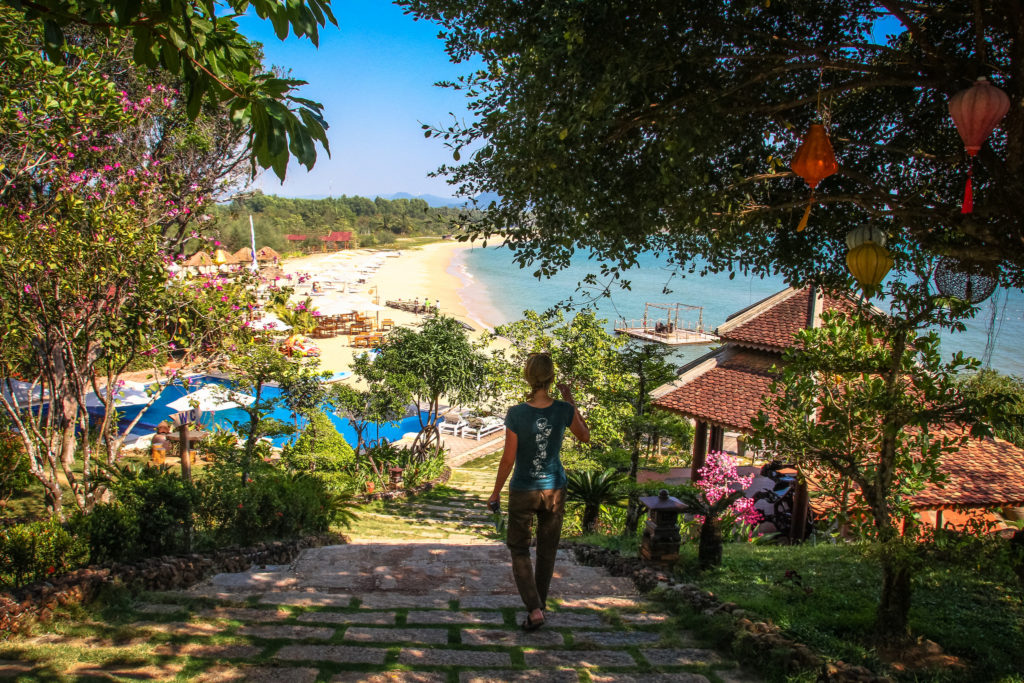
Phu Quoc is the largest of Vietnam’s islands. Image Credit.
Much of the southern half of the country is where you’ll find the big resorts and resort towns. Nha Trang is arguably the most up and coming, though it’s been popular since the French colonial days, here you’ll see a modern skyline of resorts and hotels as the town enters its boom period.
Don’t let it put you off though, the city’s main beach is 6km long (3.7miles) and is lined with a well-maintained promenade and tons of palm trees meaning that while it won’t feel like a desert island, it won’t feel like you’re tanning in Central Park either.
I’m not mad on resort towns, so I’m not the best person to ask to go into detail on this, and while Vietnam’s beaches are decent, I’m also guessing you’re not visiting the country especially for them – so count them as a bonus rather than a focus.
4. The scenery will blow your mind
Vietnam is nothing if not scenic. Whether it’s the palm-lined waterways and floating markets of the Mekong Delta in the South, the jagged, jungle-clad hills and caves of the central regions, the mist-drenched rice terraces of Sa Pa or the thousands of impressive limestone islets rising sheer from the sea in Ha Long Bay – Vietnam is one giant photo op.
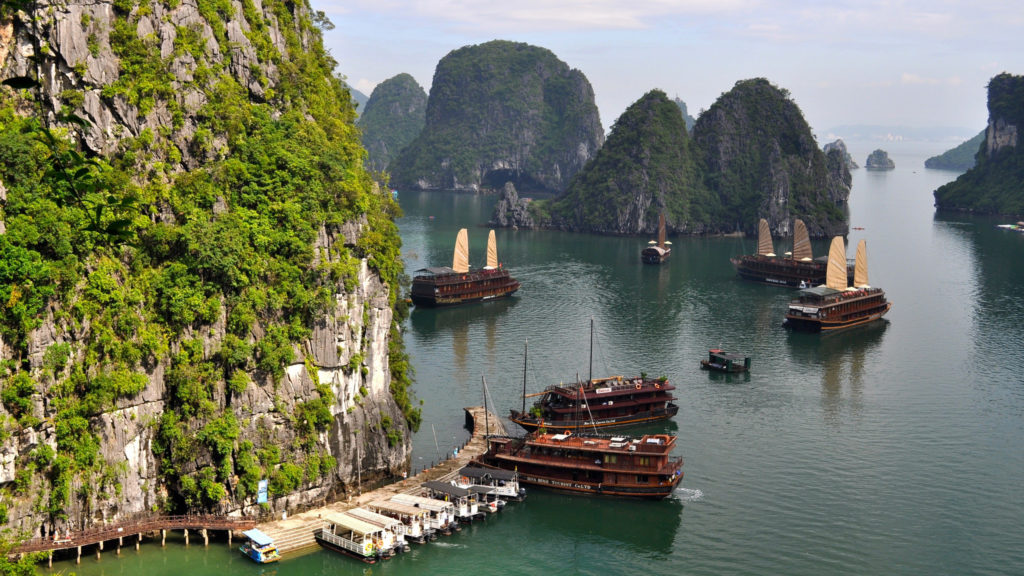
Halong Bay is Vietnam’s premier tourist attraction and an absolute must if you love dramatic scenery. Image Credit.
First up, let’s talk about Ha Long, the elephant in the room. If you’re going to Vietnam, you’re probably going to Ha Long Bay, the country’s premier UNESCO world heritage site (it has 7) and one of the New 7 Natural Wonders of the World. It’s an enormous swathe of water containing some 2000 limestone islands.
Just be prepared – while it may have protected status, Ha Long Bay can often be packed with thousands of tourists, the water can be dirty at times too due to it being alongside a busy port city and shipping route. If you’re after peace and quiet you may be disappointed, unless you manage to get to some of the smaller outlying islands rather than just the main ones the big tour groups go to; though it must be said for scenery it’s great!
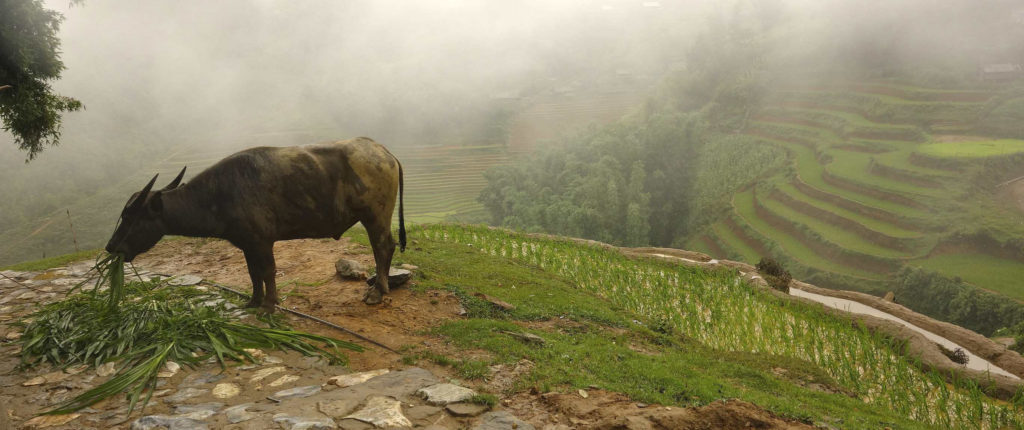
Lao Cai and Sa Pa in far northern Vietnam can be reached by overnight sleeper train and/or bus from Hanoi and are great for scenic vistas and experiencing Vietnam’s many minority cultures. Image Credit.
Sa Pa in the the country’s far north west is where you’ll be going if you’re after meeting some of Vietnam’s minorities like the Hmong and Yao people. It’s also great if you’re feeling a little adventurous.
You can hire a motorbike and make your way into the hills to see some of the breathtaking scenery as the road winds through stunning passes like Tram Ton. Or get your hiking boots on and explore the rice terraces, small villages and spectacular vistas on a two day trek – these usually give you the opportunity to do a homestay with a local family for a night to experience these warm and interesting people first hand, rather than from the windows of a tour bus.
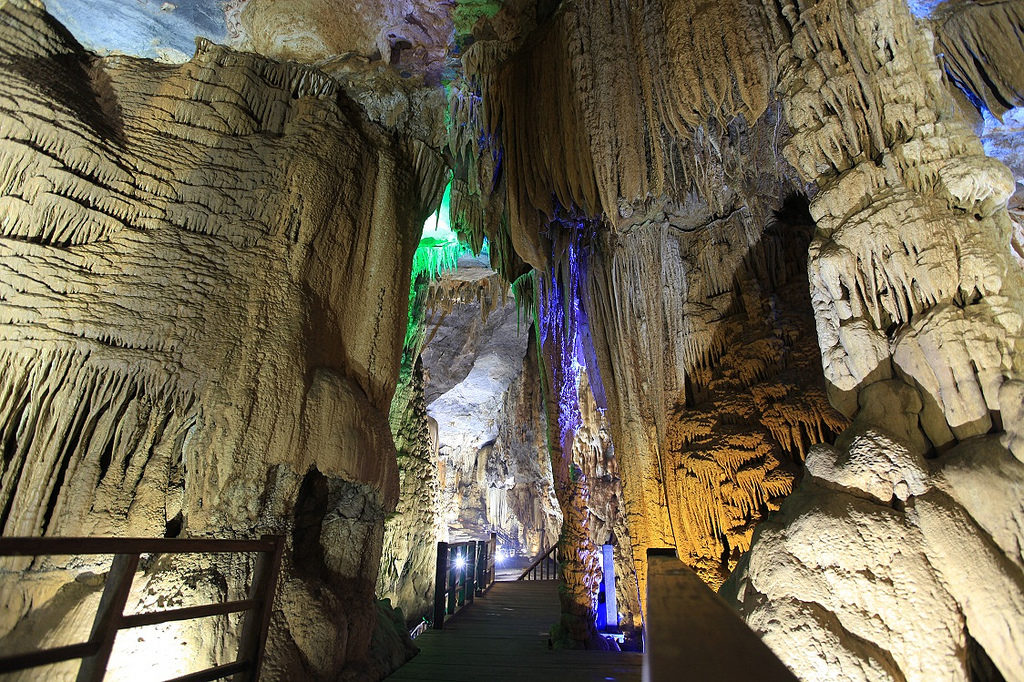
Paradise Cave is super popular with tour groups so get in as early as possible to avoid the crowds and experience the eerie silence for yourself. Image Credit.
The country’s narrow central regions are home to some more natural scenery, it’s also cave country! The Phong Nha-Kẻ Bàng National Park is home to the world’s largest cave, Son Doong which was only discovered in 2009; it’s so large you could fly a 747 through it’s largest chambers. While this is on the pricey side to visit (around $3000 per person for a few days expedition into the cave), the rest of the park offers great karst scenery with a bunch of other caves you can explore on a cheaper day trip.
Tien Son and Phong Nha caves can be done together and shouldn’t cost you more than about $6 to see both (without a guide) while Thien Duong Cave, also known as Paradise Cave is breathtaking and probably the main draw-card in the area with it’s internal boardwalks and beautifully lit formations. You’ll need to rent a motorbike to drive the 70km there from Dong Hoi, entrance to the cave + guide costs around $5-$6 per person.
5. The history will mesmerize you
Vietnam has an interesting and turbulent history. Most famous is the Vietnam War, the bloody proxy war between communist and capitalist forces supported by the Soviet Union in the north and the United States in the South; the north won resulting in a humiliating defeat for the US. One thing is for sure though, while it left a brutal scar on this country’s history, Vietnam has bounced back tenfold.
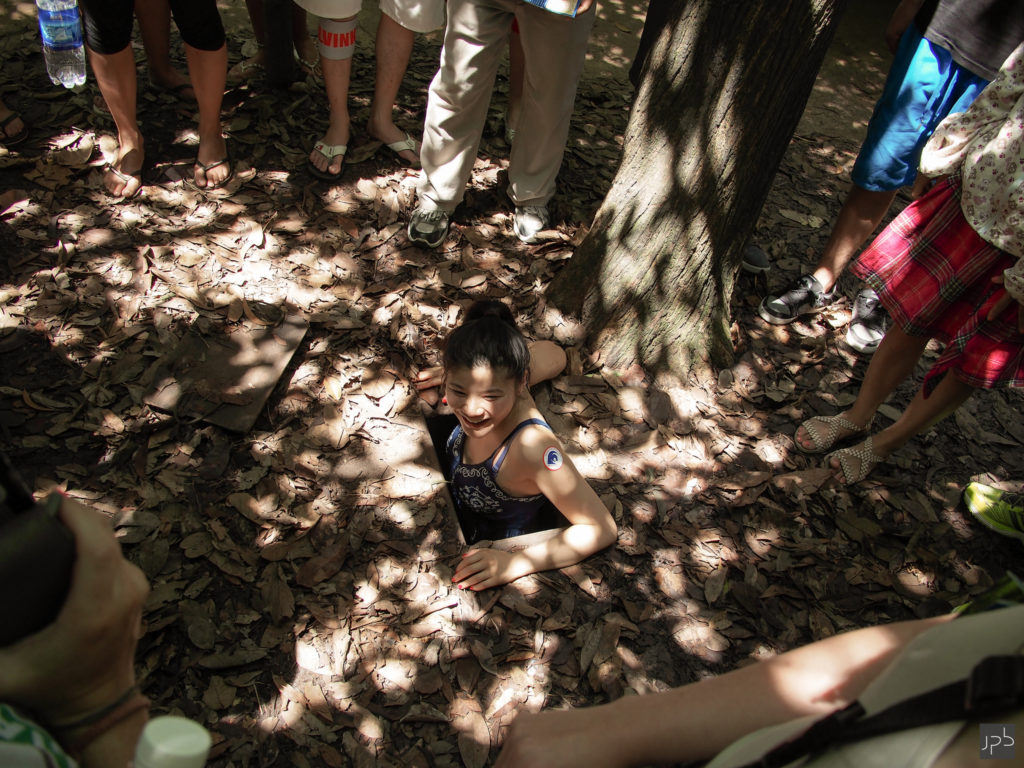
A visit to the famous Cu Chi Tunnels can be a little hair-raising if you easily feel claustrophobic! Image Credit.
The poster child for the Vietnam war experience for tourists is definitely the Cu Chi tunnels. The Vietcong (North) were expert guerrilla fighters circumventing the South’s often superior firepower by using jungle trails along the Laos and Cambodia borders as well as some further into the country, often these went below ground in well-camouflaged tunnels.
Cu Chi is a village a couple of hours north of Ho Chi Minh City (Saigon) and is famous for it’s resistance to bombings by US forces by using tunnels to house the entire town – once bombing started the whole village simply moved underground to the tunnels which were started during the French colonial times but expanded during the Vietnam War. There were make-shift hospitals, schools, sleeping quarters, dining areas and administrative areas for planning counter-attacks.
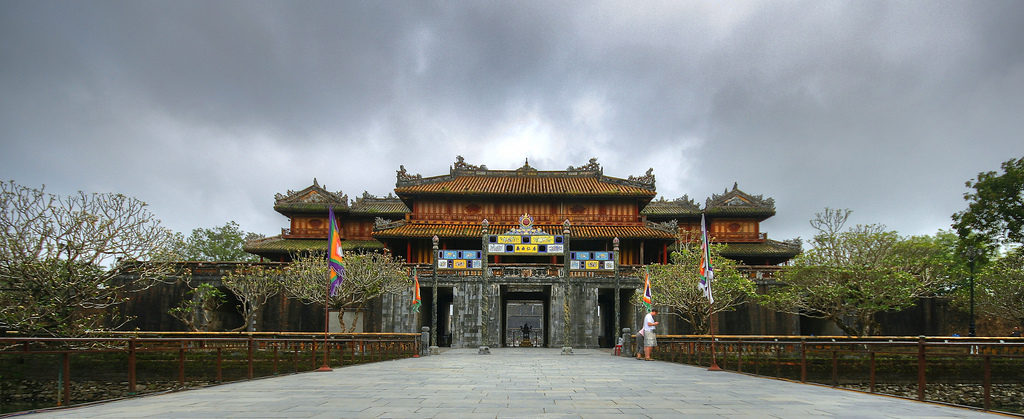
Hue is a wealth of regal looking buildings, especially within the imperial citadel. Just be prepared for some rain though, the city has a notoriously wet climate so bring an umbrella. Image Credit.
But much of Vietnam’s history goes back a lot further and arguably the best places to explore the classical history of the country will be to visit the central regions. The two best are probably Hue and Hoi An. Hue, pronounced like “huh-way”, is the former capital of the Nguyen Dynasty during the 19th and early 20th centuries.
It’s got tons to see and is fairly tightly packed so you can easily get around the main imperial citadel on foot. Most famous here will probably things like the Ngo Mon gate, the man entrance to the city and the Thai Hoa Palace with it’s ornate coronation hall, but really it’s worth strolling around in general as it’s full of stunning historical buildings. Also a trip to the imperial tombs on the edge of the city can be quite rewarding for a few photo ops.
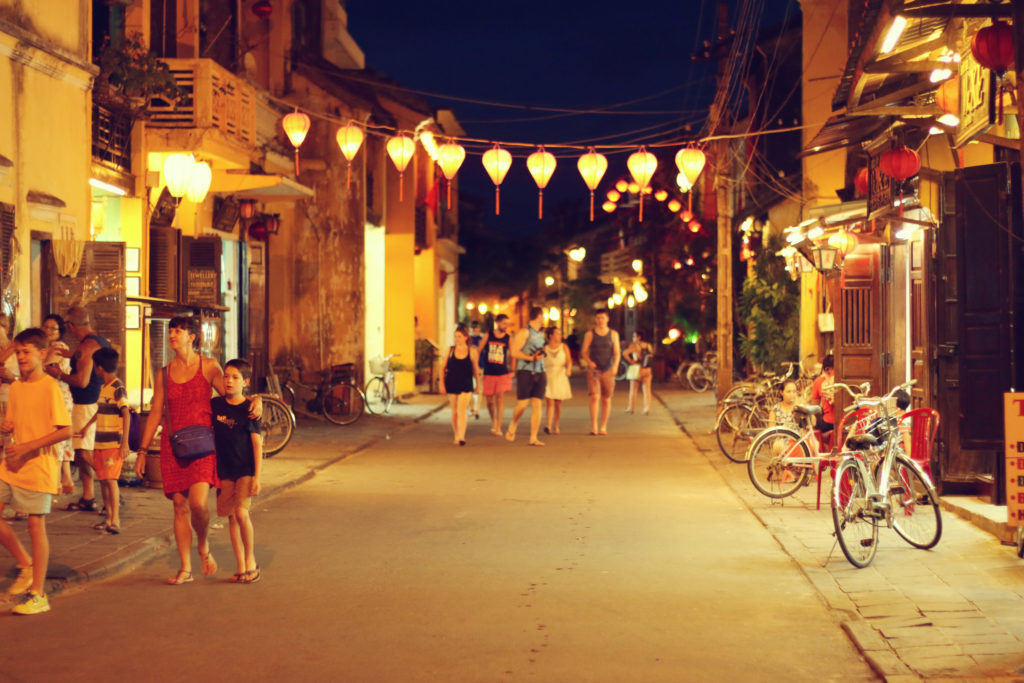
Hoi An has a long history and offers tons to see. Try and spend a night or two and take a stroll along the pretty water-side streets lined with restaurants. Image Credit.
Nearby (about 3 hours south) is the ancient port city of Hoi An which has a much lengthier history spanning some 2000 years. It’s also a great city to wander around on foot. Here you’ll find the famous Japanese Covered Bridge and tons of museums, temples, congregation halls and old houses along the picturesque narrow streets. The city has had a ton of influence from Chinese immigrants over the centuries and it’s evident in the architecture everywhere in Hoi An.
Interested in Teaching English in Vietnam? We’ll send you more info!
Or learn more about our Teach English in Vietnam program


Doing Vietnam in a couple of weeks out of Hong Kong and I am super excited. Even more so after reading this 🙂